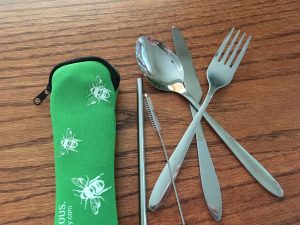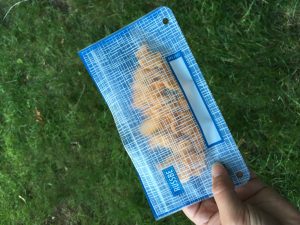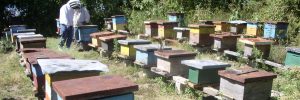By Emma Bright ’18, Community Member
As I sat in the bay window of my Eighth Street apartment Friday, Sept. 20, I heard the clamor of voices from afar. As they drew closer, I made out the chant “We want climate justice!” being passionately yelled by a small but feisty group of youth climate protesters.
I did not know it as they picketed by, but I soon learned that from Sept. 20 through 27, roughly 4,638 events were scheduled in 139 countries in an effort to join people together for a Global Climate Strike. In New York alone, more than 1.1 million students cut class and marched on Friday.
At first, I felt a little wave of pride, it takes a lot of gusto to march down Eighth street on a Friday afternoon. However, what caught my attention next is what kept my thoughts spinning the following days. An older man sipping a beer on the patio yelling in response, “Then don’t buy rubber shoes!” I immediately scanned the protesters for any brands flagged for lacking environmental ethics, for a hint of hypocrisy in the marchers.
I also wondered, “Is all that gusto a hipster facade? They probably used disposable water bottles.”
My own judgment spiraled on. Assuming that the man was referencing the all-too-close-to-home Wolverine dumping debacle near Grand Rapids, I further found myself analyzing my personal environmental choices of the week.
As I consider myself to be quite environmentally conscious, I felt a wave of guilt as I remembered the moldy Tupperware of soup I found in the back of my fridge. I dumped it all in the trash instead of composting the soup and washing the container. I remembered the sweater I bought at one of the big box stores, probably unethically made. Why didn’t I save up for organic cotton?
How many straws have I used this month? Was it selfish to blast my AC when I would have been only slightly warmer with the window open? I own two pairs of Chacos, so am I somewhat to blame for Wolverine’s waste disposal? Similar thoughts spiraled, and my own sustainable consciousness grew more guilt.
Then it dawned on me. These kids marching for “climate justice” were not marching to inform me that I am a terrible person for buying rubber shoes or using a plastic straw on occasion.
Not to say one shouldn’t be aware of their own carbon footprint, but they were marching for justice – for the attention of Congress, for policy change, for the recognition of the global effects of climate change.
The climate change strike of 2019 is not a force to make you feel terrible about the number of plastic bags you use at the grocery store. While everyone in the strike would admit it is preferable to use your own reusable bags, the movement is bigger than that: It is a force to call attention to the greater picture of global sustainability.
Policy change can happen, and it begins with showing our representatives that we, the community, believe that change is needed.
Emma Bright graduated from Hope College in 2018 with a degree in English literature. She strives to live her life as sustainability as possible, even on a budget in Holland.
This Week’s Sustainability Framework Theme
Community Knowledge: The collective knowledge and energy of the community is an incredible resource that must be channeled to where it is needed.
ABOUT THIS SERIES
Living Sustainably is a collection of community voices sharing updates about local sustainability initiatives. It is presented by the Holland-Hope College Sustainability Institute, a joint project of Hope College, the City of Holland and Holland Board of Public Works. Go to www.hope.edu/sustainability-institute for more information.


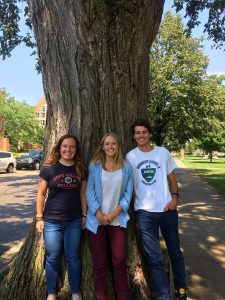

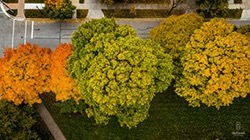 This app collects the user’s location and pinpoints the nearest tree in our database. That tree’s unique ecosystem services data are then provided to the user. In the future, users will be able to add trees, contributing to our growing database.
This app collects the user’s location and pinpoints the nearest tree in our database. That tree’s unique ecosystem services data are then provided to the user. In the future, users will be able to add trees, contributing to our growing database.
